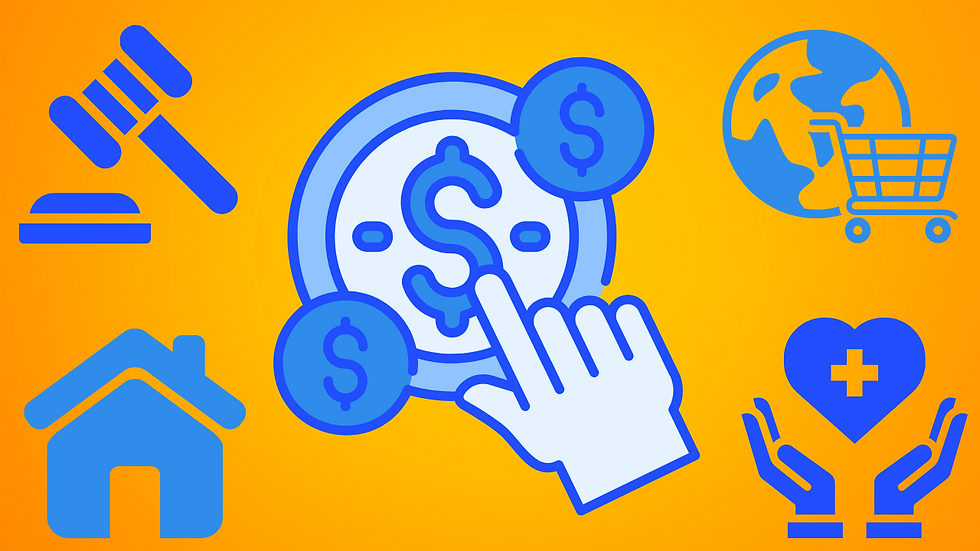Pay-Per-Click Key Metrics 2025
- top10ofhistory
- Mar 7
- 4 min read
Pay-Per-Click (PPC) advertising remains a cornerstone of digital marketing, offering businesses a strategic avenue to drive targeted traffic and achieve measurable results.
In 2025, understanding the dynamics of Cost-Per-Click (CPC) and conversion rates is essential for optimizing PPC campaigns. This comprehensive analysis delves into current PPC statistics, providing insights to inform and enhance your advertising strategies.

Overview of Pay-Per-Click Advertising
Pay-Per-Click (PPC) marketing is a digital advertising model where advertisers pay a fee each time their ad is clicked. It is commonly used on search engines like Google Ads and social media platforms like Facebook, Instagram, and LinkedIn.
PPC allows businesses to bid on keywords relevant to their target audience, ensuring their ads appear in search results or on websites where potential customers are active. This form of marketing is highly measurable and provides instant traffic, making it a popular strategy for businesses looking to increase brand visibility, drive website traffic, and generate leads.
By optimizing ad copy, targeting the right audience, and refining bidding strategies, advertisers can maximize their return on investment (ROI) and achieve their marketing goals effectively.
Current Cost-Per-Click (CPC) Rates
CPC rates vary across platforms, industries, and ad placements. As of 2025, the average CPC rates are as follows:
Google Ads:
Search Network: $2.69
Display Network: $0.63
Facebook Ads:
Overall Average: $0.63
Lead Generation Campaigns: $1.92
Instagram Ads:
CPC Range: $0.40 – $0.70
X (formerly Twitter) Ads:
CPC: $0.38
LinkedIn Ads:
CPC: $5.58
Pinterest Ads:
CPC Range: $1.50 – $10
Amazon Ads:
CPC: $0.91
These rates are influenced by factors such as industry competitiveness, target audience demographics, and ad quality.
Conversion Rates in PPC Advertising

Conversion rates measure the percentage of ad clicks that result in a desired action, such as a purchase or sign-up. A higher conversion rate indicates effective ad targeting and compelling landing pages.
As of 2025, average conversion rates are:
Overall Average: 2.55%
Google Ads:
Search Ads: 3.40%
Display Ads: 0.89%
Facebook Ads:
Lead Generation Campaigns: 8.25%
E-commerce Ads:
Product Listing Ads: 3.71%
Shopping Ads: 4.14%
These statistics highlight the varying effectiveness of PPC campaigns across different platforms and objectives.
Industry-Specific PPC Statistics

PPC performance metrics can differ significantly across industries. While specific industry data for 2025 is limited, historical trends provide a general understanding:
Legal Services:
Average CPC: $6.75
Conversion Rate: 2.35%
Real Estate:
Average CPC: $3.80
Conversion Rate: 3.15%
E-commerce:
Average CPC: $1.20
Conversion Rate: 4.50%
Healthcare:
Average CPC: $2.50
Conversion Rate: 3.00%
Education:
Average CPC: $1.80
Conversion Rate: 2.80%
These figures serve as benchmarks, with actual performance varying based on campaign specifics and market conditions.
Strategies to Enhance PPC Performance
To optimize your PPC campaigns for better cost-efficiency and higher conversion rates, consider the following strategies:
Refine Keyword Targeting: Utilize tools like Google's Keyword Planner to identify high-performing keywords relevant to your business.
Optimize Ad Copy and Design: Craft compelling ad copy with clear calls-to-action and ensure ad designs are visually appealing.
A/B Test Landing Pages: Continuously test different landing page layouts, content, and forms to determine what resonates best with your audience.
Utilize Ad Extensions: Implement ad extensions such as site links, callouts, and structured snippets to provide additional information and increase ad visibility.
Monitor and Adjust Bids: Regularly review bid strategies and adjust them based on performance metrics to maximize ROI.
Leverage Remarketing: Target users who have previously interacted with your website or ads to encourage conversions.
Analyze Competitor Strategies: Keep an eye on competitor ads and keywords to identify opportunities and stay competitive.
The Future of PPC Advertising
Looking ahead, several trends are expected to shape the PPC landscape:
The future of Pay-Per-Click (PPC) marketing is evolving rapidly, driven by advancements in artificial intelligence, automation, and changing consumer behaviors. As digital advertising platforms become more sophisticated, advertisers must adapt to new technologies that enhance targeting, personalization, and campaign optimization.
AI-powered bidding strategies, predictive analytics, and machine learning are transforming the way businesses allocate budgets and optimize their ad spend.
Automated bidding, for example, allows advertisers to maximize conversions while minimizing costs by leveraging real-time data to make instant adjustments. This shift reduces the need for manual campaign management, allowing marketers to focus on strategy and creative elements.
Privacy regulations and the decline of third-party cookies are also shaping the future of PPC marketing. As platforms like Google and Meta move toward a more privacy-centric web, advertisers must find alternative ways to target and track users.
First-party data, contextual targeting, and AI-driven audience modeling will play a crucial role in maintaining ad performance without relying on traditional tracking methods. Marketers will need to invest in customer relationship management (CRM) tools, data aggregation, and consent-based marketing strategies to build long-term audience engagement.
Additionally, the rise of voice search, visual search, and emerging ad formats like interactive and augmented reality (AR) ads will further change the PPC landscape. Consumers are engaging with content in new ways, and advertisers who adapt to these trends will have a competitive edge.
Platforms like TikTok, YouTube Shorts, and Instagram Reels are gaining traction, making short-form video ads an essential part of PPC campaigns. As automation and AI continue to refine ad placements, businesses that prioritize innovation and data-driven decision-making will thrive in the ever-changing world of digital advertising.
.jpg)







Comments